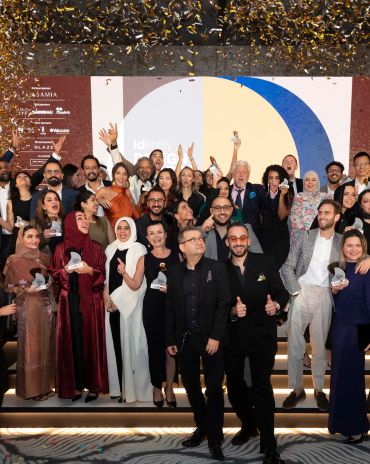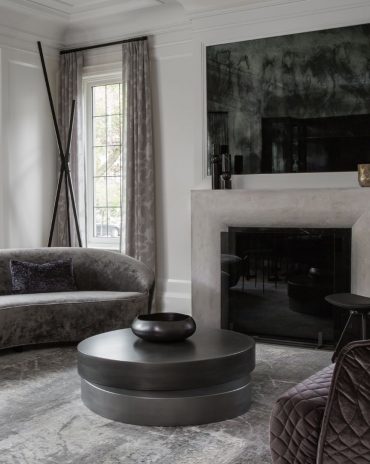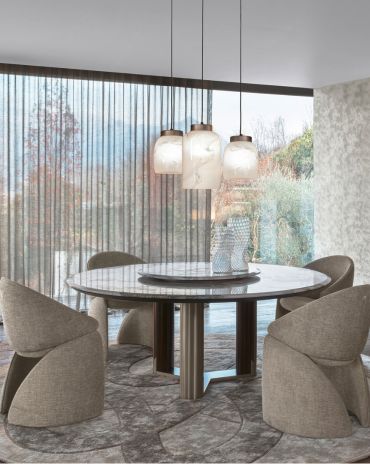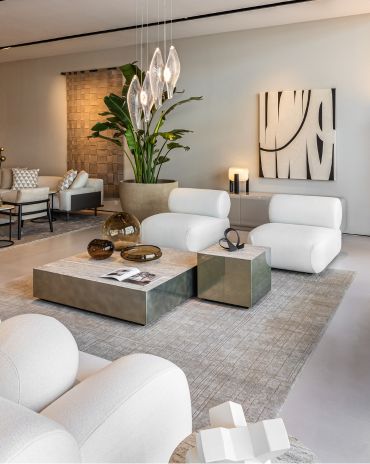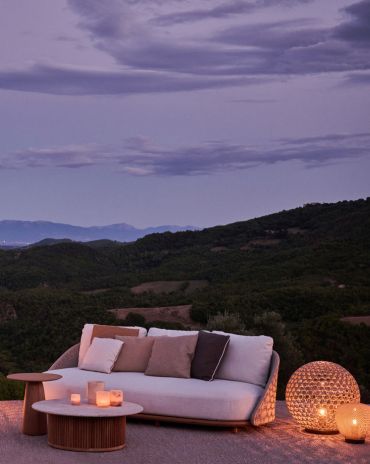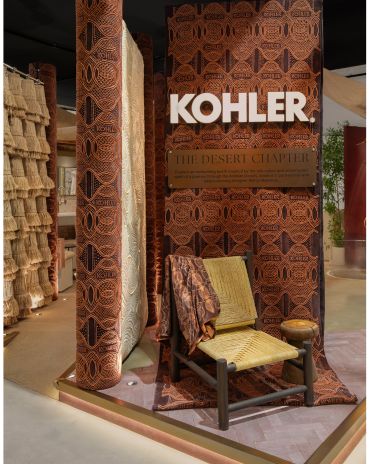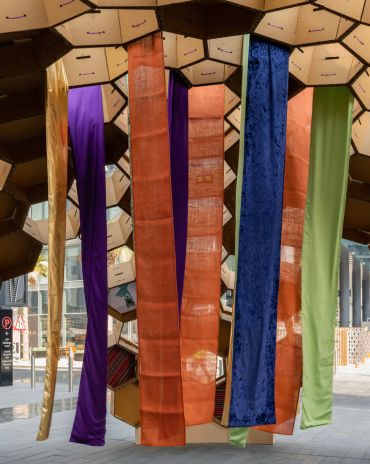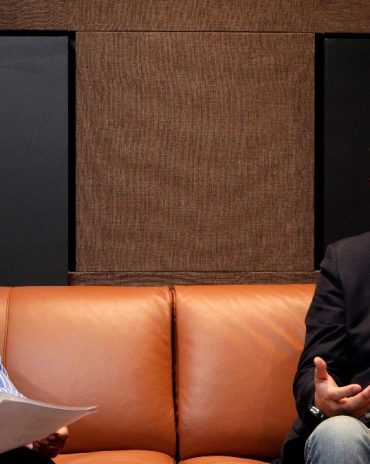Copyright © 2025 Motivate Media Group. All rights reserved.
Blurring indoor and outdoor spaces has become more important than ever
Designers and furniture brands are growing their focus on outdoor design
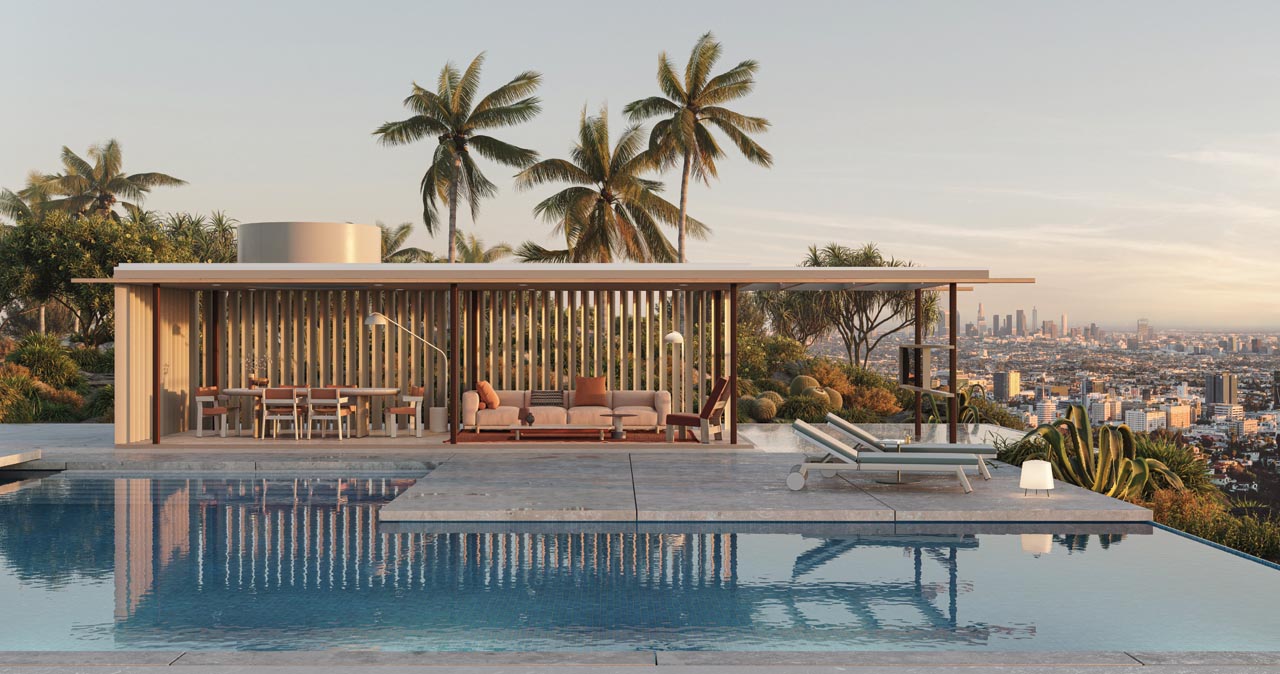
2020 has proved to be an exciting year for the interior design industry. We are ramping up the functionality of our living environments and creating a shift in our thinking. We are also taking time to reconsider how we can take advantage of our glorious outside spaces and create fresh air living rooms. Working from home and schooling children from the kitchen table has forced many to feel they need to change up existing living rooms and create additional, useable exterior spaces.
The closure of beaches and parks, restrictive physical distancing regulations and the replacement of glorious summer events with virtual reality performances have forced residential outdoor spaces to play an increasingly important role in leisure activities, while helping maintain a sense of wellbeing and normalcy. Having just 30 minutes of natural daylight exposure helps regulate the body’s circadian rhythm, which contributes to a more regular sleep pattern.
Now is the best time to consider extending outdoor spaces to create additional living rooms; set up a healthy garden-kitchen; build an outdoor pavilion or simply put up a hammock; and luxuriate in knowing that you have a quiet space to read in.
Hybrid furniture
COVID-19 has added pressure points to our once peaceful homes. Many are now seeking ingenious alternatives that can spatially redistribute spaces to accommodate learning, working, living and playing. The hybrid prefix has allowed us to explore multifunctionality in our living spaces. Online furniture sales have risen dramatically, with expected revenues in both the US and EU furniture markets to grow annually by 4.3 per cent from 2020 to 2023.
Creating an outside living space makes our homes even more unique. Their designs should seamlessly evolve and change while retaining a sense of tradition. Consider each piece of furniture as limitless and timeless, completing and enhancing a hybrid living space. It is time to embark on a journey to change perspectives around the way we perceive living spaces, where environments are no longer dictated by limited definitions of indoor and outdoor living but should instead be considered as hybrid spaces.
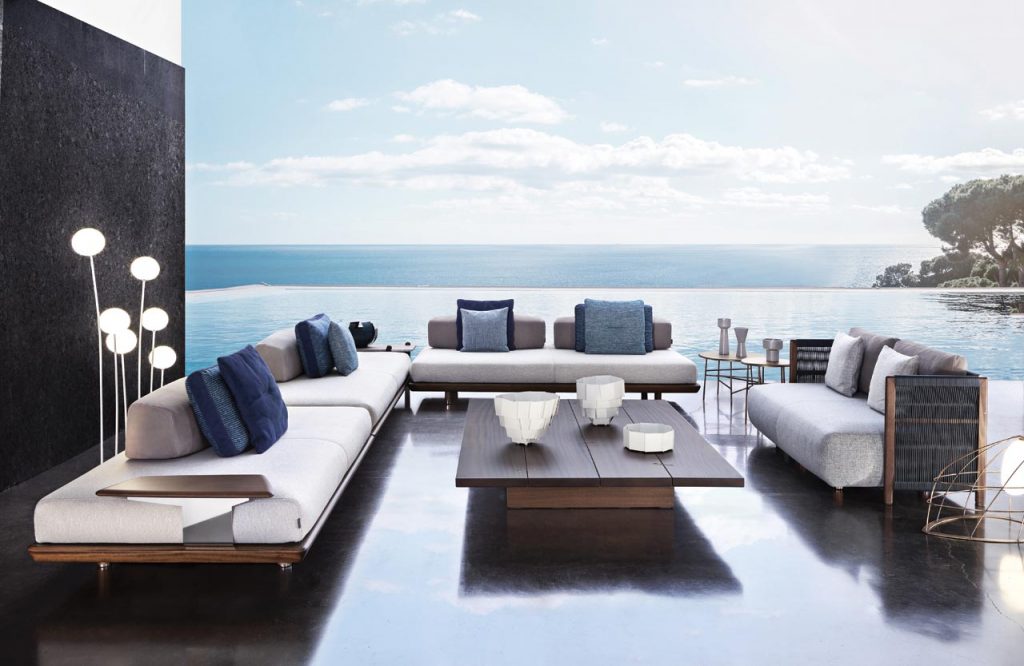
Exteta
This cross-over between indoor and outdoor areas has made its way into furniture design, where brands such as Exteta are busy crafting one-off pieces of exquisite furniture that are made for both indoors and outdoors, as well as catering to hybrid spaces. Although the brand’s ethos claims that there are no shortcuts to beauty, Exteta is building a bridge between humans and nature in a manner that highlights experience and authenticity.
Blurring indoors and outdoors
Biophilic design aims to create a seamless harmony between indoor and outdoor spaces. Screened-in porches, covered decks, pergolas and other transitional areas blur the lines between inside and outside. Interior designers are largely taking on a more holistic approach when catering to those who want to incorporate both.
Designers are seeking ways to blur the lines of traditional indoor living by bringing form, order and structure to outdoor areas. Functionally-designed features create dynamic, purpose-driven living spaces that retain a sense of openness yet protect us from natural elements.
In order to create that fluidity, Kettal launched Kettal Pavilions, which boast various colour and panelling options. The self-standing aluminium structures can be designed to include blinds and curtains to ensure privacy, while additional packages can include daybeds, tables, dining and relaxing armchairs and settees. Alternatively, a sunroom or conservatory would be a more traditional way of connecting a home with its garden.
Keeping climactic context in mind, it is vital to understand the importance of experimenting with new fabrics and materials that can withstand weather conditions such as those in the Gulf region, be it strong heat, salty air, the harsh desert environment or the occasional sandstorm.
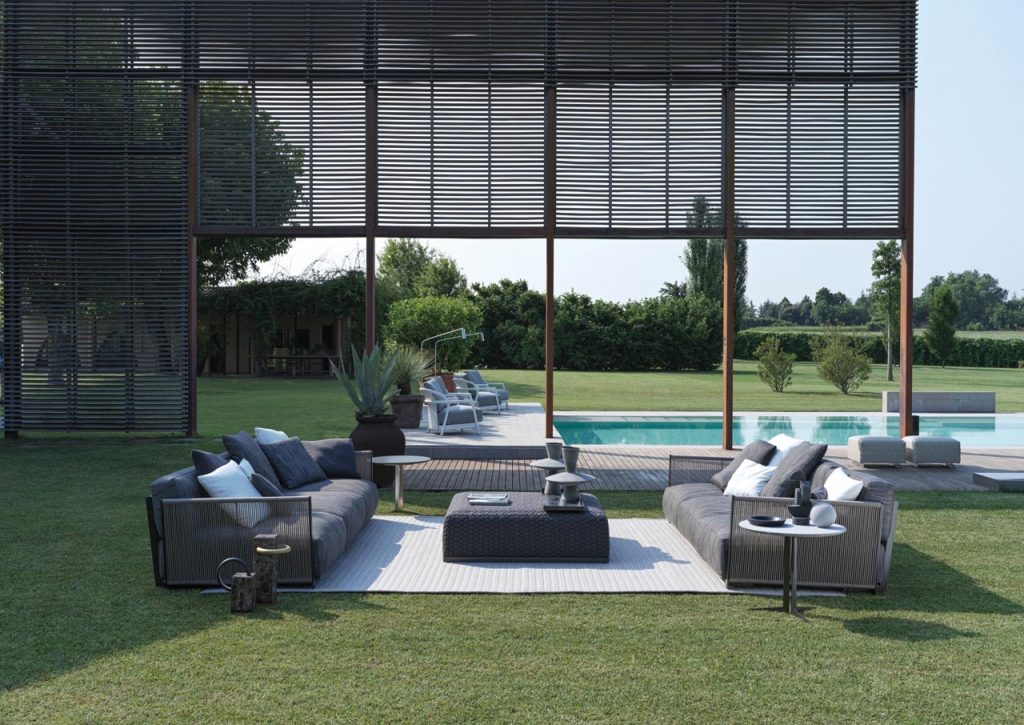
Flexform
Flexform has recently launched an outdoor furniture collection which embraces the warmth of internal comforts with the necessary practicalities of outdoor living. “Venturing into the outdoor furniture category is something that we’ve wanted to do for a long time,” explains design director Christian Grosen. “The demand has been there. It is almost an extension of the indoor space and, no matter what you call it, it is worthy of the same careful design consideration.”
As restrictions continue to abound, it is increasingly vital that we have space we can enjoy throughout the seasons, whether it is a balcony, a porch or patio, regardless of size.
Early in 2020, Patricia Urquiola – who spearheads Cassina as its art director – launched Cassina ‘Perspective Goes Outdoor’, a celebration of reborn classics, mid-century icons and contemporary pieces designed by Rodolfo Dordoni, Philippe Starck and Urquiola herself, embracing its first-ever outdoor furniture collection.
The ‘Perspective Goes Outdoor’ range includes a carefully curated collection of rugs, accessories and lighting filled with plenty of al fresco joy. Each piece embodies warm and inviting finishes, richly coloured fabrics, three-dimensional materials and elaborately patterned textiles with a tropical feel.
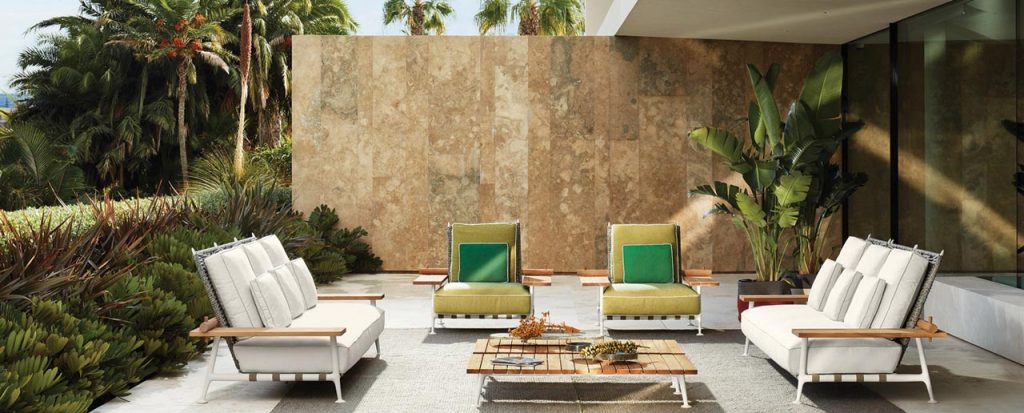
‘Fenc-e Nature’ by Philippe Starck for Cassina
Similarly, ‘Fenc-e Nature’ is the continuation of a journey undertaken by Philippe Starck and Cassina.
Starck celebrates harmony with nature in this outdoor collection inspired by and respecting the environment. The ‘Fenc-e Nature’ collection features durable and timeless furniture that is distinguished by its organic, almost crude elements that are tactile – such as an armrest in solid teak, sandblasted to create an irregular effect. Each backrest is handwoven with wood or natural willow, thus strengthening the bond with the outdoor and nature. “‘Fenc-e Nature’ is the dream of a life in harmony with nature; elegant and respectful. It is not a project; it is a lifestyle proposition,” Starck said of the collection.
Outdoor luxury
In addition to more traditional outdoor furnishings, simple tables and seating will always remain popular. Today, we see the introduction of luxury furniture that is not traditionally found outside but more commonly set inside our living rooms. Soft furnishings including cushions and rugs, art and bar trolleys are now being introduced to the outdoors, bringing an element of beauty and comfort.
There is a rise of craftsmanship in the furniture industry – and one can also see this reflected outdoors. In a world ruled by technology and machines, it is essential to retain a natural balance, and the beautiful traditional art of craftsmanship is sure to create some unique products.
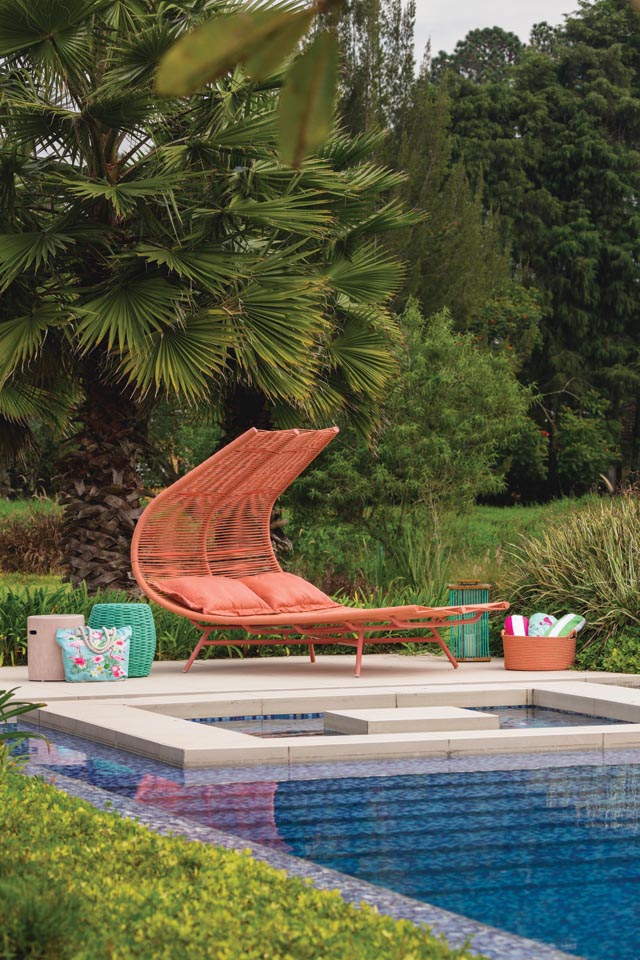
Tidelli
The introduction of new textiles has been transformative in garden design. Rugs define a room and create diverse environments, while adding a greater sense of warmth and comfort. This makes them even more important in outdoor environments, where there’s an absence of walls and delineated spots.
The Middle Eastern landscape may, at times, appear bleak and barren, making rugs the perfect additions to outdoor spaces in the region. Outdoor rugs can be a little more dazzling and adventurous than those inside your home. Choose from carefully created and exciting colour palettes that complement the hues found across the region.
Tidelli is an excellent example, exquisitely showcasing these capacities in its hardwearing rugs. The brand has developed a harmonious interaction between design and nature, humanising the relationship between man and the environment. Tidelli’s rugs are made from hardwearing nautical rope and are bursting with colour. It has also recently introduced a rug simulator to the market, where one can create one’s own designs, shapes and sizes.
Creating new traditions
High-end indoor furniture manufacturers, historically, did not tend to have outdoor lines, so it was often difficult to find equivalent quality in garden or poolside furnishings. As Starck once flippantly said, “‘Today, everybody makes outdoor collections. They put outdoor fabrics on existing furniture and think that makes it ‘outdoor’”. We know that creating durable outdoor furniture is not that simple and there is now an emergent demand for such specialised pieces.
 For example, the Udine region of Italy has been fondly known as the ‘Chair District’, producing furniture with elegant soft shapes, achromatic colours and refined details. Each piece was designed to stand the test of time, and the same tradition continues today, but with a slight nod to the contemporary.
For example, the Udine region of Italy has been fondly known as the ‘Chair District’, producing furniture with elegant soft shapes, achromatic colours and refined details. Each piece was designed to stand the test of time, and the same tradition continues today, but with a slight nod to the contemporary.
Over a hundred years ago, the same Italian creativity and artisanal traditions became the basis of the Potocco workshop that also produced chairs. Each of its products is studied and customised in minute detail, just like a tailor-made suit. Beautiful fabrics render each creation unique, with a perfect mix of tailoring, experimentation and quality. Chairs for outdoor living are created with the same care and attention to detail. Potocco’s new collection of outdoor furniture impeccably combines company tradition with innovation and a strong focus on customisation.
The Latest
In photos: Winners at the identity Design Awards 2025
Presenting the winners of 2025 identity Design Awards.
Identity Design Awards 2025 – Winner’s List
Here are the winners of the identity design awards 2025
Hogg’s Hollow
Set along the bend of a quiet river and sheltered within a mature, tree-lined enclave of Toronto, this riverside residence offers a dialogue between structure and softness, restraint and warmth
Salone del Mobile.Milano Paints Riyadh Red
The “Red in Progress” installation marks a powerful first step toward the city’s full-scale 2026 edition
An interview with Fabio Masolo on the Giorgio Collection
A conversation on passion, timeless design, and bringing Italian craftsmanship to the world
European Design, Instantly Within Reach
In a city where design dreams often come with long lead times, Caspaiou brings a refreshing difference – luxury, curated and available now
Shaping Tomorrow’s Interiors
Here’s what awaits at the OBEGI Home showcase at Dubai Design Week
Maison Margiela Residences
Conceived by Carlo Colombo, these bespoke residences will be located on the Palm Jumeirah
The Desert Chapter by Kohler and Marco Maximus
A fusion of design, culture, and the colours of nature
Downtown Design 2025 – The Highlights
A showcase of innovation, craftsmanship, and design excellence
In conversation with: Simon Wright of TGP International
identity interviews the Chairman and Founder of TGP International on the beginnings of the business and how the company shapes human experiences and memories in the hospitality industry.
We Design Beirut Edition Two: A Collective Revival
Uniting designers, artisans, and visionaries to reimagine Beirut’s future





